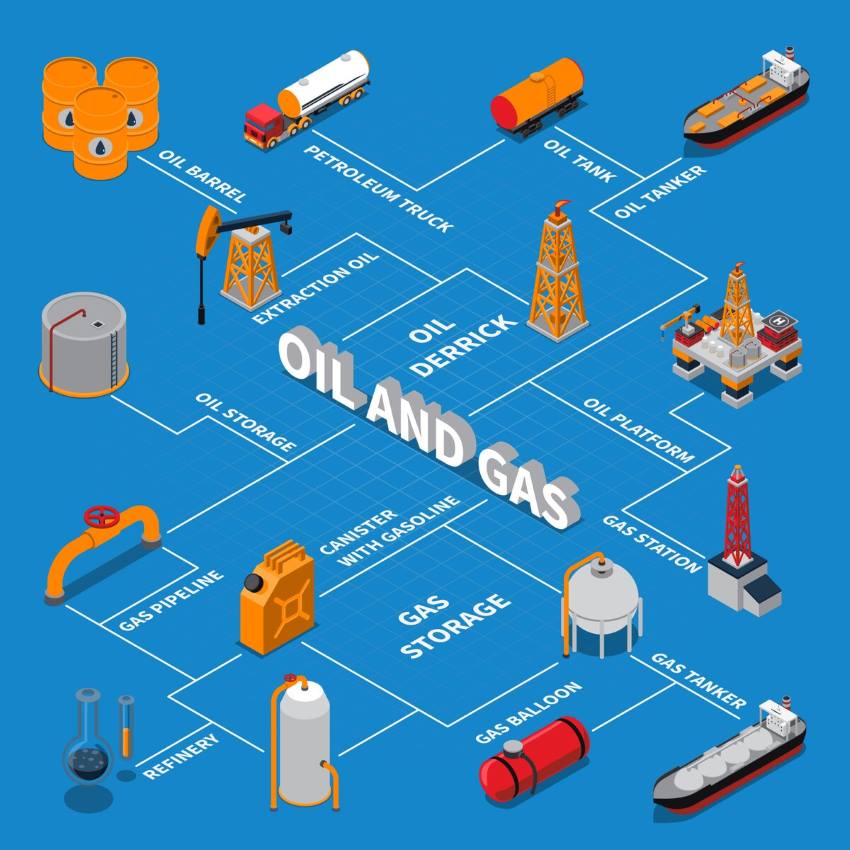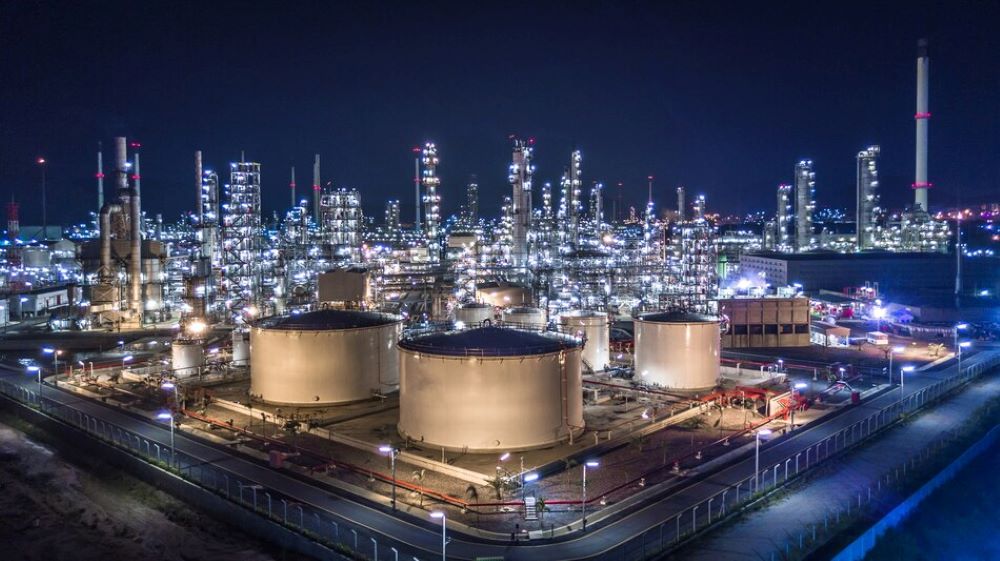Understanding LNG Gas Processing
In energy production, liquefied natural gas (LNG) has emerged as a game-changer, revolutionizing how we harness and transport natural gas. LNG gas processing, a crucial aspect of this transformation, involves intricate steps to convert natural gas into liquid for efficient storage and transportation. This comprehensive blog post aims to take you on a deep dive into the world of LNG gas processing, exploring its significance, the intricate process involved, technological advancements, and the future landscape of LNG.
Defining LNG Gas Processing:
- LNG gas processing is the method of cooling natural gas to extremely low temperatures and transforming it into a liquid state for easy transport and storage.
- The role of LNG is to provide a cleaner and more versatile energy source.

Significance of LNG:
- The global demand for LNG and its role in diversifying energy sources.
- The environmental benefits of LNG include reduced greenhouse gas emissions.
The LNG Gas Processing Journey
Feed Gas Conditioning:
- The initial step involves removing impurities, water, and other contaminants from the raw natural gas.
- Pre-treatment is essential for preventing corrosion and ensuring the effectiveness of downstream processes.
Liquefaction Process:
- They are cooling the treated natural gas to cryogenic temperatures, typically around -260°F (-162°C).
- The use of specialized refrigerants and cryogenic technology to achieve liquefaction.
Storage and Transportation:
- Storing LNG in specialized tanks at atmospheric pressure.
- The use of LNG carriers for safe and efficient transportation across oceans and continents.
Regasification at Destination:
- The process of returning LNG to its gaseous state at the destination facility.
- Regasification terminals and their role in ensuring a reliable supply of natural gas.
Technological Advancements in LNG Processing
Advanced Liquefaction Technologies:
- Overview of various liquefaction methods, including cascade, mixed refrigerant, and nitrogen cycles.
- The efficiency gains and environmental considerations associated with advanced liquefaction technologies.
Modular and Floating LNG Facilities:
- The emergence of modular LNG facilities that offer flexibility and cost-effectiveness.
- Floating LNG (FLNG) facilities and their potential to unlock new offshore gas reserves.

Digitalization and Automation:
- The integration of digital technologies and automation in LNG processing.
- Real-time monitoring, predictive maintenance, and enhanced safety through digital innovations.
Challenges and Innovations
Environmental Concerns:
- Addressing potential environmental impacts, including methane emissions during extraction and transport.
- Ongoing research and innovations to minimize the carbon footprint of LNG production.
Infrastructure Development:
- The challenges associated with developing LNG infrastructure include regasification terminals and distribution networks.
- Innovations in infrastructure to support the growing demand for LNG.
Market Dynamics and Global Trade:
- The influence of geopolitical factors on LNG markets.
- Global trade patterns and the impact of LNG on energy security.
The Future Landscape of LNG Gas Processing
LNG gas processing stands at the forefront of the global energy transition, offering a cleaner and more efficient alternative to traditional natural gas transportation. As technology advances and environmental considerations shape the industry, the future of LNG looks promising. The LNG landscape is evolving rapidly from modular and floating facilities to digitalization and sustainability initiatives. This journey into the world of LNG gas processing is a testament to its significance in shaping the future of energy. Here’s to a more sustainable, accessible, and innovative energy future with LNG at its core.
Pros of LNG Gas Processing:
Cleaner Energy Source:
LNG is considered a cleaner-burning fuel than traditional fossil fuels, contributing to reduced greenhouse gas emissions and air pollution.
Global Energy Trade:
LNG facilitates the global trade of natural gas, allowing countries to diversify their energy sources and enhance energy security.
Energy Density and Storage:
LNG has a high energy density, making it an efficient and space-effective way to store and transport natural gas over long distances.
Infrastructure Flexibility:
LNG can be transported and stored in various ways, including pipelines, tanks, and even compressed natural gas (CNG), providing flexibility in infrastructure development.
Market Access and Price Stability:
LNG provides access to a global market, helping stabilize prices and reduce dependence on regional supply and demand fluctuations.
Technological Advancements:
Ongoing technological innovations in LNG processing contribute to increased efficiency, cost-effectiveness, and safety in production and transportation.
Offshore Reserves Utilization:
Floating LNG facilities enable the exploitation of offshore gas reserves that were previously economically challenging to develop.
Cons of LNG Gas Processing:
Methane Emissions:
Methane emissions during LNG extraction, production, and transportation can contribute to climate change, offsetting some of its environmental benefits.
Environmental Impact:
The overall environmental impact of LNG facilities, including habitat disruption, water use, and potential spills, raises environmental concerns.
Infrastructure Costs:
Developing LNG infrastructure, including liquefaction and regasification terminals, can be expensive and require significant upfront investment.
Safety Concerns:
LNG is flammable, and safety concerns are associated with its handling, transportation, and storage, although industry standards and regulations mitigate risks.
Limited Market Penetration:
The availability of infrastructure, geopolitical factors, and the development of alternative energy sources may limit the widespread adoption of LNG as a fuel source.
Dependency on Fossil Fuels:
Despite being a cleaner alternative, LNG remains a fossil fuel, contributing to concerns about long-term sustainability and the need for a transition to renewable energy.
Regulatory Challenges:
Evolving and complex regulations in different regions can pose challenges for LNG producers and may impact the cost and feasibility of projects.
While LNG gas processing offers significant advantages regarding cleaner energy and global trade, addressing associated environmental and safety concerns is essential. Balancing the benefits and challenges is crucial for ensuring LNG’s responsible and sustainable development as a vital component of the global energy mix.
Frequently Asked Questions (FAQs)
- What is LNG, and how is it different from natural gas?
- LNG, or Liquefied Natural Gas, is the liquid form of natural gas. It is created by cooling natural gas to extremely low temperatures, making storing and transporting it over long distances easier.
- How is LNG produced?
- LNG is produced through liquefaction, where natural gas is cooled to approximately -260°F (-162°C), transforming it into a liquid state for efficient storage and transportation.
- What are the main applications of LNG?
- LNG is used for various applications, including power generation, heating and fuel for vehicles and marine vessels. It is also a crucial component of the global energy trade.
- How does LNG contribute to environmental sustainability?
- LNG is considered a cleaner-burning fuel compared to traditional fossil fuels. It produces fewer greenhouse gas emissions and helps reduce air pollution, contributing to environmental sustainability.
- What safety measures are in place for LNG processing and transportation?
- Safety is a top priority in LNG processing. Stringent safety standards, advanced technologies, and comprehensive risk management protocols are implemented to ensure LNG’s safe production, storage, and transportation.
- Can LNG be used as a fuel for vehicles?
- Yes, LNG is used as a fuel for specific vehicles, particularly in the transportation sector. LNG-powered vehicles offer a cleaner alternative to traditional gasoline and diesel.
- How is LNG transported, and what is an LNG carrier?
- LNG is transported in specialized cryogenic tanks on LNG carriers. These carriers are designed to maintain the extremely low temperatures required to keep LNG liquid during transit.
- What are the environmental considerations associated with LNG?
- While LNG is considered cleaner, environmental considerations include methane emissions during production. Ongoing efforts focus on minimizing these emissions and ensuring sustainable LNG practices.
- How can countries benefit from LNG in terms of energy security?
- LNG allows countries to diversify their energy sources, reducing dependence on regional supplies and enhancing energy security through access to a global market.
- How can I invest in or get involved in the LNG industry?
- Investing in the LNG industry may involve exploring opportunities in LNG production, transportation, or infrastructure development companies. Consult with financial advisors and explore investment options based on your goals.
